
- Home
- Brand
- Item Length
- Item Width
- Material
- Style
- American (81)
- American Country (50)
- Americana (134)
- Antique (513)
- Art Deco (123)
- Art Déco (46)
- Art Nouveau (35)
- Chippendale (41)
- Country (128)
- English (42)
- French (121)
- French Country (33)
- Industrial (233)
- Jacobean (40)
- Mid Century Modern (74)
- Mid-century Modern (59)
- Modern (39)
- Rustic / Primitive (51)
- Traditional (105)
- Victorian (235)
- ... (4757)
- Type
- Apothecary Cabinet (99)
- Bar Cabinet (79)
- Cabinet (1475)
- Cabinets & Cupboards (280)
- China Cabinet (321)
- Corner Cabinet (88)
- Cupboard (74)
- Curio Cabinet (160)
- Dental Cabinet (37)
- Display Cabinet (176)
- Drawer Cabinet (56)
- File Cabinet (379)
- Hanging Cabinet (40)
- Hoosier Cabinet (51)
- Hutch (31)
- Kitchen Cabinet (30)
- Medical Cabinet (64)
- Medicine Cabinet (103)
- Pie Safe (35)
- Storage Cabinet (115)
- ... (3247)
LARGE ANTIQUE Pine Virginia Railroad MAP CHEST INDUSTRIAL ARCHITCT MAP 20 DRAWER
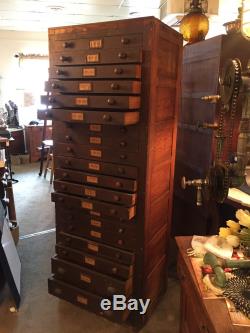
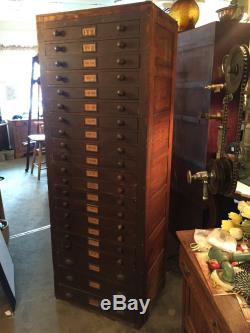
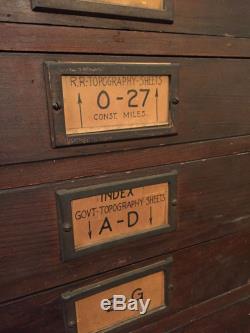
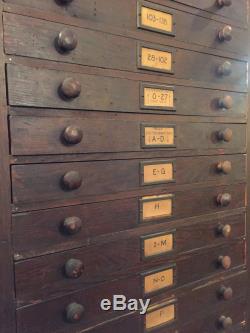
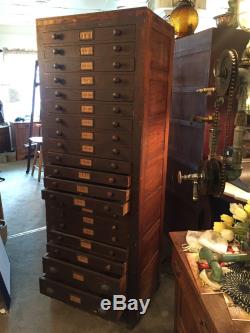
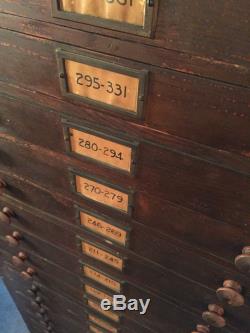
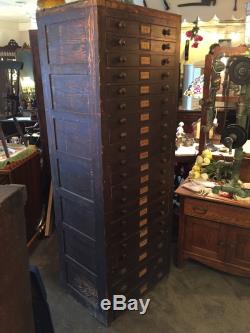
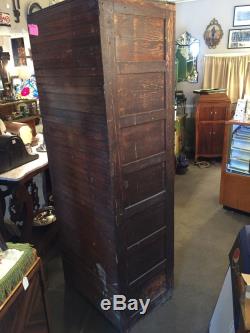
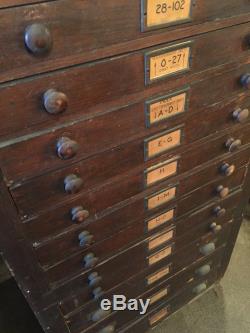
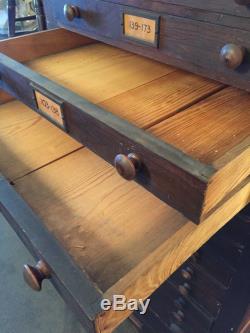
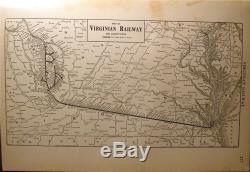
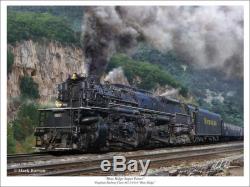


Early 1900's Virginian Railroad 20 drawer old pine map chest. From the closed Roanoke, Virginia station.
Solid pine railroad map chest with 20 drawers, original hardware and drawer labels. The overall cabinet dimensions are: 70 inches tall, 25.5 inches across, 19 inches deep.
The top 17 drawers are 2 1/4 inches tall. Nternal area/capacity of: 2x20.5x17. The bottom 3 drawers are 4 1/4 inches tall. The internal area/capacity of the bottom drawers are: 4x20.5x17. LOCATION: This map chest is located at Gene's Trading Post Antiques in Roanoke, Virginia. With questions or further information. HISTORY OF THE VIRGINIAN RAILWAY. The Virginian Railway (reporting mark VGN) was a Class I railroad located in Virginia and West Virginia in the United States. The VGN was created to transport high quality "smokeless" bituminous coal from southern West Virginia to port at Hampton Roads.Early in the 20th century, William Nelson Page, a civil engineer and coal mining manager, joined forces with a silent partner, industrialist financier Henry Huttleston Rogers (a principal of Standard Oil and one of the wealthiest men in the world), to develop the Deepwater Railway, a modest 85-mile long short line railroad to access untapped bituminous coal reserves in some of the most rugged sections of southern West Virginia. When Page was blocked by collusion of the bigger railroads, who refused to grant reasonable rates to interchange the coal traffic, he did not give up as they no doubt had anticipated.
As he continued building the original project, to provide their own link, using Rogers' resources and attorneys they quietly incorporated another intrastate railroad in Virginia, the Tidewater Railway. In this name, they secured the right-of-way needed all the way across Virginia to reach Hampton Roads, where a new coal pier was erected at Sewell's Point.
The two projects were legally joined and renamed the Virginian Railway in early 1907. Despite efforts to stop them, they then built the "Mountains to Sea" railroad right under the noses of the big railroads and the elite group of a few industrialists (so-called "robber barons") who controlled them.
Completed in 1909, the Virginian Railway was largely financed through Rogers' personal fortune. It was a modern well-engineered railroad with all-new infrastructure and could operate more efficiently than its larger competitors. Throughout a profitable 50-year history, VGN continued the Page-Rogers philosophy of paying up front for the best.It achieved best efficiencies in the mountains, rolling piedmont, and flat tidewater terrain. Known for operating some of the largest and best steam, electric, and diesel motive power, it became nicknamed Richest Little Railroad in the World. Merged into the Norfolk and Western Railway in 1959, a large portion of the former VGN remains in service in the 21st century for the Norfolk Southern Railway, a Class I railroad headquartered in Norfolk, a few blocks from the former Virginian Railway offices in Norfolk Terminal Station. 1907: Virginian railway is born[edit].
The Virginian Railway Company was formed in Virginia on March 8, 1907 to combine the Deepwater Railway in West Virginia and the Tidewater Railway in Virginia into a single interstate railroad, only a few months after Victoria was incorporated. On April 15, 1907, William Nelson Page became the first president of the new Virginian Railway. Work progressed on the VGN throughout 1907 and 1908 using construction techniques not available when the larger railroads had been built about 25 years earlier.
By paying for work with Henry Rogers' own personal fortune, the railway was built with no public debt. This feat, a key feature of the successful secrecy in securing the route, was not accomplished without some considerable burden to Rogers, however. Rogers suffered some financial setbacks in the Financial Panic of 1907 which began in March. Then, a few months later that same year, he experienced a debilitating stroke. He was largely disabled for five months.
Fortunately, Henry Rogers recovered his health, at least partially, and saw to it that construction was continued on the new railroad until it was finally completed early in 1909. The last spike in the Virginian Railway was driven on January 29, 1909, at the west side of the massive New River Bridge at Glen Lyn, near where the new railroad crossed the West Virginia-Virginia state line.
Rogers left the next day on his first (and only) tour of the newly completed railroad. He died suddenly only six weeks later at the age of 69 at his home in New York. But by then, the work of the Page-Rogers partnership to build the Virginian Railway had been completed. While neither William Page or Henry Rogers ended up running the railway, it was arguably a crowning lifetime achievement for each man.
Together, they had conceived and built a modern, well-engineered rail pathway from the coal mines of West Virginia to port at Hampton Roads right under the noses of the big railroads. The Virginian Railway could operate more efficiently than its larger competitors, had all-new infrastructure, and no debt. It was an accomplishment like no other in the history of US railroading, before or since. Merger with Norfolk & Western[edit].
During World War I, VGN was jointly operated with its adjacent competitor, the Norfolk & Western Railway (N&W), under the USRA's wartime takeover of the Pocahontas Roads. The operating efficiencies were significant. However, N&W never lost sight of VGN and its low-grade routing through Virginia. After World War I there were many attempts by C&O, N&W, and others to acquire the Virginian Railway. However, the US Interstate Commerce Commission (ICC) turned down attempts at combining the roads until the late 1950s, when a proposed Norfolk & Western Railway and Virginian Railway merger was approved in 1959. The item "LARGE ANTIQUE Pine Virginia Railroad MAP CHEST INDUSTRIAL ARCHITCT MAP 20 DRAWER" is in sale since Thursday, March 30, 2017. This item is in the category "Antiques\Furniture\Cabinets & Cupboards\1900-1950". The seller is "blueridgemountaintrader" and is located in Roanoke, Virginia. This item can't be shipped, the buyer must pick up the item.- Type: map chest
- Original/Reproduction: Original
- Material: Wood & Metal
- Height: 70 inches
- Width: 25 1/2 inches
- Depth: 19 inches

